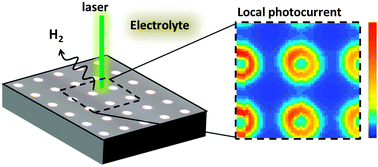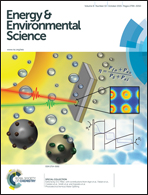Methods of photoelectrode characterization with high spatial and temporal resolution
Abstract
Materials and photoelectrode architectures that are highly efficient, extremely stable, and made from low cost materials are required for commercially viable photoelectrochemical (PEC) water-splitting technology. A key challenge is the heterogeneous nature of real-world materials, which often possess spatial variation in their crystal structure, morphology, and/or composition at the nano-, micro-, or macro-scale. Different structures and compositions can have vastly different properties and can therefore strongly influence the overall performance of the photoelectrode through complex structure–property relationships. A complete understanding of photoelectrode materials would also involve elucidation of processes such as carrier collection and electrochemical charge transfer that occur at very fast time scales. We present herein an overview of a broad suite of experimental and computational tools that can be used to define the structure–property relationships of photoelectrode materials at small dimensions and on fast time scales. A major focus is on in situ scanning-probe measurement (SPM) techniques that possess the ability to measure differences in optical, electronic, catalytic, and physical properties with nano- or micro-scale spatial resolution. In situ ultrafast spectroscopic techniques, used to probe carrier dynamics involved with processes such as carrier generation, recombination, and interfacial charge transport, are also discussed. Complementing all of these experimental techniques are computational atomistic modeling tools, which can be invaluable for interpreting experimental results, aiding in materials discovery, and interrogating PEC processes at length and time scales not currently accessible by experiment. In addition to reviewing the basic capabilities of these experimental and computational techniques, we highlight key opportunities and limitations of applying these tools for the development of PEC materials.

- This article is part of the themed collection: Status of Photoelectrochemical Water Splitting: Past, Present, and Future


 Please wait while we load your content...
Please wait while we load your content...